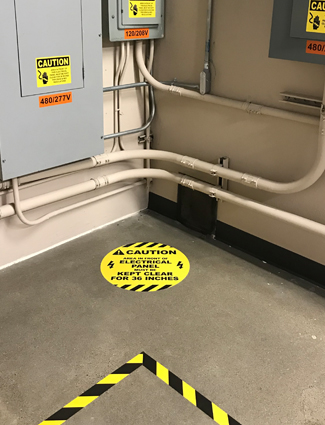Tips to Maximize Control Panel Safety
03
February,
2023
2 MINUTE READ

Facility lights, moving equipment, and machinery action it all requires electricity veining through the workplace. The industrial control panel is the heart of the workplace's energy operation. For whatever reason, labeling the electric panel is often neglected. When there is a problem with electrical equipment, it is important that workers know where to go to fix the problem efficiently and safely.
Attention to Details
In 2016, there were 154 deaths resulting from exposure to electricity, according to the Bureau of Labor and Statistics. Injuries that are common when working with electricity relate to shock and arc flash. Employers can't completely eliminate the risks without giving up the use of electrical power. However, they can protect employees through safety best practices such as using the right personal protective equipment (PPE), lockout/tagout procedures, and up-to-date electrical equipment identification.
While the mine industry has improved safety, working with electricity has its hazards. In May, a maintenance worker at a surface mine sustained severe burns while working in an electrical panel. According to the Mine Safety and Health Administration, the worker's screwdriver came into contact with an electrical feed line. Fortunately, the man survived. The injury likely could have been avoided with proper controls in place such as de-energizing the equipment and using lockout/tagout, employing the proper PPE, and ensuring all electrical circuits and circuit breakers are identified properly before troubleshooting or performing electrical work.
Keep Communication Current

Service equipment, motor control centers, panels, feeders, substations, and switchboards all should have a label on them. Proper labeling affects the safety of everyone in the facility today and even years down the road when maintenance or repairs must be performed on equipment that may be unmarked or labeled with outdated information. Industrial control panel labeling also helps during disaster response, should emergency professionals need access to facility equipment. Workplaces can save time when it is needed most by properly labeling control panels using supplies that can withstand the environment. Here are a few labeling tips:
- Use color coded labels for different applications in the facility. For example, as an option, use red for emergency stops and disconnects, white for identifying equipment, and blue for procedures or instructions, according to OSHA.
- Have a separate adhesive label on the outside of the circuit panel that has emergency phone numbers and important information such as the location of main shutoff switches.
- Verify that panel labels are clear and specific. Neatly identify circuits and breakers for easy access and to help avoid an overload.
- Highlight control panel boundaries and other electrical equipment working areas with highly visible floor marking. This helps to establish safe limits of approach.
Employees who work with high voltage need to be fully aware of job site hazards. Prior to performing or troubleshooting electrical work, properly identify electrical circuits and circuit breakers. For added safety during maintenance on electrical panels, be sure to use correctly rated, well-maintained, and job-specific PPE, such as coveralls, jackets, eye protection, insulated gloves, and insulated tools. Be sure to de-energize equipment, and add a lock and tag for security and to inform workers. Testing equipment and circuitry also helps ensure electrical circuits are de-energized prior to any work.
RELATED RESOURCES

NYC Plans to Remove Old, Misleading Fallout Shelter Signs
Signs that were posted during the Cold War are still up in places around New York City. These signs are old ...
Read
5 Ways to Make Workplace Safety Signs Stand Out
Signs really are easy to use, cost-effective, and get results. But, will just any sign do? Not all signs are ...
Read
Harwood Grant Deadline Soon
Nonprofits have until July 20 to submit applications for a piece of $11.5 million in grant funding from the ...
Read.png)


